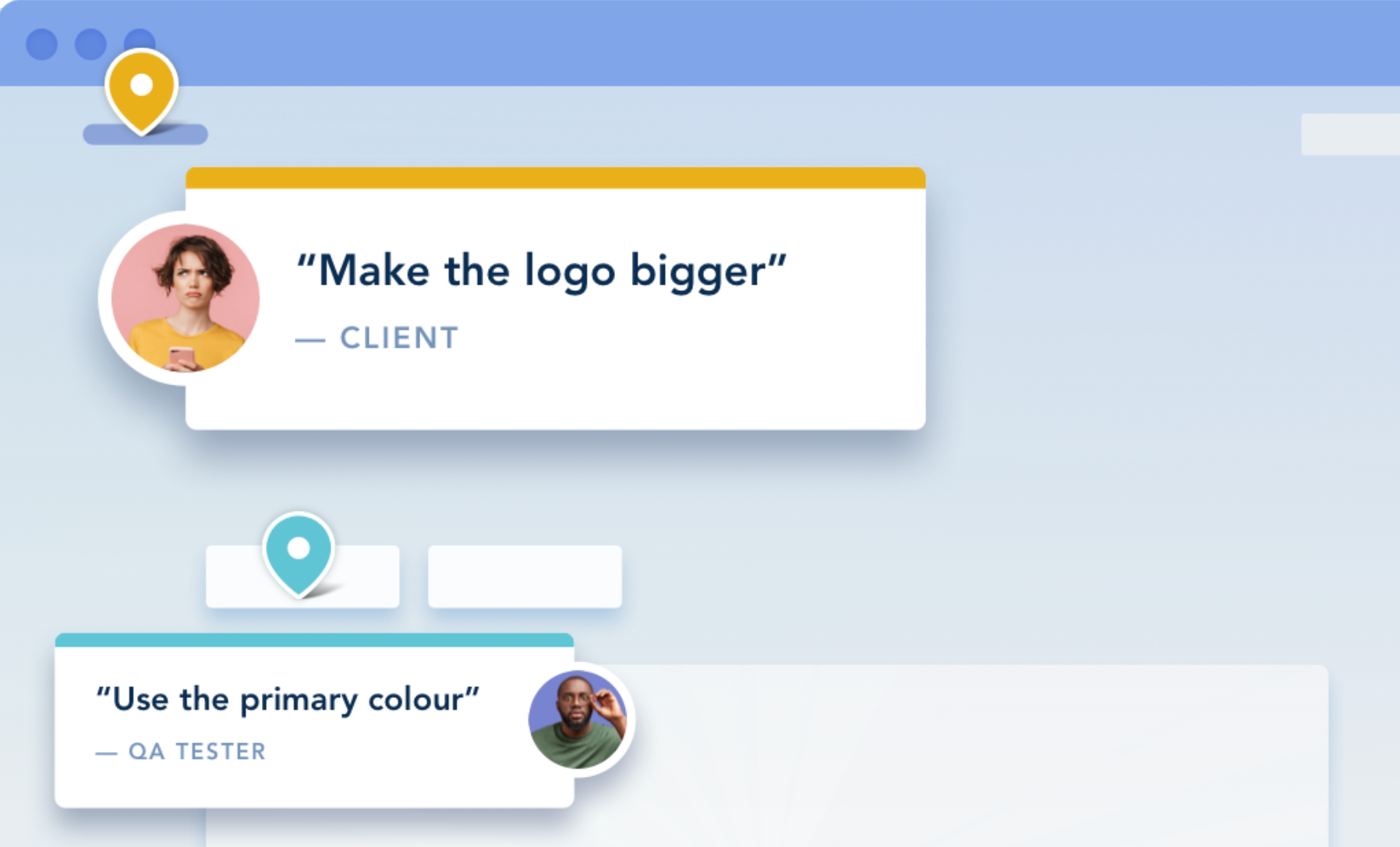In response to the recent economic slowdown, consumer spending priorities have shifted. That means consumers are only buying the most important products or services. But they still expect full value.
If your agency falls short of this expectation, you risk losing clientele.
Exceed client expectations by making your agency operations more efficient.
Value-conscious customers will appreciate it and become more likely to recommend and rehire your agency.
In the next section, we discuss key action steps your agency can take to achieve operational excellence.
Contents:
- Train Your Team Members
- Empower Your Team to Make Decisions
- Standardize Your Agency Services
- Create a Project Management Process
- Use Proven Systems and Automation Tools
- Drop Internal 'Nice To Haves' And Put Clients First
- Create a Single Source of Truth for Your Projects
- Set Daily Micro-Goals and Weekly Macro Goals
- Have Regular Short Meetings
- Use Time Management Tools
- Find Your Agency's Optimal Workflow Speed
- Conclusion
11 Action Steps to Better Agency Operations
According to management expert Peter Drucker, the purpose of an organization is to enable ordinary people to do extraordinary things. When your employees do the extraordinary, your company achieves outstanding results.
Train Your Team Members
Staff people who, with proper training and onboarding, have the capacity to perform and improve in their roles as full-time employees.Then empower your team to do extraordinary things with training.
Even the best time management, people management, and project management tools can only help a team deliver value if they have the skills to do so.
As an agency leader, it is crucial to train your team. The right training program will help your employees perform their jobs to perfection.
Training your staff will not only improve your agency's workflow, but employee engagement as well. Employees feel more enthusiastic when they understand how they contribute to the bottom line.
Likewise, better-engaged employees mean a better employee retention rate.
Empower Your Team to Make Decisions
The fastest way to handicap your agency is to train your team without giving them any responsibilities or control.
Every team member should be free to give input about the macro and micro business decisions impacting their work.
That doesn't mean you should assign a major project to a team member without supervising them. It does mean encouraging critical decision-making among team members and supporting creative ideas.
Team empowerment results in faster, more efficient, and well-executed outcomes. When team members have the power to make decisions, they feel more engaged and develop better leadership skills. This will drive your team toward operational excellence.
Standardize Your Agency Services
Without any standardization, your agency will produce inconsistent project requirements and outcomes. For example, your sales team will likely secure jobs that are both within and outside your company's competency.
That means every project the project team encounters will be different. Sometimes, the project requirements will match the team's skills. At other times, they won't. This can become as chaotic as it is counterproductive.
The proven way to set clear expectations in project delivery is to standardize your services. Streamline your team’s skills with the customer's expectation of the project's outcome.
Standardization benefits your agency and customers alike. When you have standardized service, you will have a clear pricing structure and service delivery process.
You'll no longer take on new projects for which you can't deliver, nor will you underbid your projects' time and labor expenses. Your agency’s overall forecasting abilities will skyrocket.
Also, standardization allows for fast and efficient project delivery. That’s because everyone understands the project requirements and expected outcomes.
Standardizing and optimizing your service may require you to commit to a specific business niche. Follow up with your management team and any other members of senior management to discuss the best solution.
You can use the 80/20 rule to identify services that bring the most value to the company. Those are the services you should prioritize.
Related: Six Rules for Agency and Client Relationships

Create a Project Management Process
A project management process divides task delivery into clear work phases. Every team should use a dedicated project management process to deliver their services or products.
1. Initiating
The first step is to turn the client's idea into a tangible goal. In this stage, you have to discuss project needs and expectations with the client.
Depending on the nature of the project, you can also create a project charter and a need assessment document to make a business case for the project.
A project charter is a document that outlines a project's success metrics, project management methods, budget, timetable, and constraints. It is a project’s single source of truth.
After setting project goals and scope, identify project stakeholders. Classify stakeholders by function, designation, communication needs, and influence. This will help you know who to meet for resources or feedback.
2. Planning
This phase is for creating and prioritizing goals. It also determines the technical requirements of identified goals, creates a detailed delivery timeline, and chooses a communication system.
Your project goals should pass the SMART scale. In goal setting, SMART stands for specific, measurable, achievable, relevant, and time-bound.
3. Executing
This is the phase where your team works on the project. Your work should follow established workflows to create a solid work product.
4. Monitoring and Control
The third and fourth project management phases are not sequential. You can perform project monitoring and control simultaneously with project execution. This ensures that your team delivers project goals to specification.
5. Feedback
This is a critical aspect of project monitoring and control. Your project team should have a quality assurance (QA) expert who provides feedback about project quality.
The communication between the QA expert and your project team should be seamless and timely. This way, a project won't suffer from slow feedback and response. Smart bug tracking and visual feedback tools like BugHerd simplify feedback project teams’ communications. You can use BugHerd across different types of agencies, from Marketing agencies to Web-development agencies.
Your client can use BugHerd to provide feedback to your internal team. Tracking bugs and providing visual feedback is easier when you use one platform.
6. Delivery
The project management process ends at the delivery stage. In this phase, the project team hands the client the final version of the project work product. The client must accept the delivery before your team initiates project closure.
After the project handover, you should close all external contracts and perform a project evaluation. A thorough project audit can reveal opportunities to improve your delivery process and meet KPIs satisfactorily.
7. Change management
This step applies to product-based agencies that deliver software or hardware products. For these agencies, a project is successful when the client can use the product delivered.
It would take training and support to help clients adopt a new product. Your agency should have a process in place to help clients use a new product after it is delivered.
Use Proven Systems and Automation Tools
Work automation tools and productivity systems can improve your agency's operating procedures. You save time and money when you use a project management system to automate task tracking. This frees up time to focus on actual work.
Similarly, you can improve team performance with productivity systems like time-blocking and Kanban. Several companies have used Kanban and time-blocking systems successfully. Toyota is a notable example. However, you shouldn't hesitate to tweak any productivity system to suit your company's needs.
Drop Internal 'Nice To Haves' And Put Clients First
Allocating your firm's resources efficiently is crucial to achieving operational excellence. Always check your to-do list for "nice to haves" and put them on hold until the essentials are done.
Prioritize the client tasks over internal tasks. No internal assignment should prevent an employee from helping the firm perform essential work.
Create a Single Source of Truth for Your Projects
Your team members will have individual approaches to work and productivity. However, everyone should be on the same page when it comes to company-wide processes or project deliverables. That means every team member must know the requirements and conditions for completing a task in a project.
Creating a single source of truth is the best way to keep everyone on the same page. A source of truth is a database of all important information concerning your company or project's rules and goals.
Every employee should have access to this database. Similarly, every project team member should be able to access the repository of project rules.
A source of truth streamlines the work process and leaves little room for miscommunication. Having a well-curated and distributed source of truth improves your agency's productivity and resource management. Your team members will also become less likely to ask questions about work standards.
Set Daily Micro-Goals and Weekly Macro Goals
Creating goals is an excellent way to hold your team accountable. Goals help to prioritize essential tasks. Use them to direct the efforts of your team members.
Organizational or “macro” goals are the dominant goals. Other, smaller goals should support them.
Encourage your team to set daily micro objectives and weekly macro goals and discuss them in meetings. This allows team members to work together to tackle significant objectives and feel accomplished daily and weekly when those goals are met.

Have Regular Short Meetings
Frequent short meetings allow team members to share their thoughts, receive feedback, and gain clarity. A meeting can have several goals but should always be short and direct.
Long meetings can become counterproductive because the human attention span is limited. While the results of most attention span studies may vary, most publications suggest that people's attention span is under 50 minutes. Keep your meetings below 50 minutes to get the best from participants.
Only interactive meetings or training should be more than 30 minutes. You can use a video, a newsletter, or a memo to pass information across without receiving feedback.
Use Time Management Tools
As an agency, you want your team members to prioritize the most productive tasks. But from time to time, they may need help completing those within the allotted time.
Time management tools can improve your team members' productivity and general performance. Brian Tracy recommends organizing work by priority. He also recommends using a master list and time planner to get the most from your time.
You can train your team to use the same time management tools to encourage teamwork and allow oversight.
ClickUp, RescueTime, and Trello are excellent time-tracking tools. You can use these tools in tandem with a master list of tasks by order of priority.
See also: How To Create Actionable Bug Reports
Find Your Agency's Optimal Workflow Speed
Finding your agency's optimal workflow speed is not about being faster. Rather, it is about doing things correctly to produce optimal results without giving up profitability or quality.
Turning up the heat might bake a pie faster, but it doesn't mean the pie will be edible or taste good.
It takes time and patience to deliver excellent work. You can't rush it. So if you want your agency to produce great work with regularity, develop a time-bound process.
We operate in a business climate where immediacy is used as a competitive advantage. Think of Amazon's one-day shipping or Uber’s instant order.
However, experience has shown that immediacy is usually a marketing gimmick. More importantly, the ideal of immediacy cannot be applied to every product or service.
You can always prepare factors of production in anticipation of an order. However, this approach opens your business to losses.
As an agency, you should work towards operational excellence that consistently delivers quality work. This is the key to competitive advantage and continuous agency growth.
When you give customers exceptional value, you create an endless circle of referrals and repeat orders.
Conclusion
Operational excellence requires more than setting and achieving a goal. Your team may have to experiment with different processes, technologies, and systems to identify the optimal flow of value from your company to the consumer.
There is no standard for operational excellence for your agency. It will look different for every business. However, the goal will always be to deliver results faster without sacrificing profit or quality.
Your agency can start its journey to operational excellence by observing the steps outlined above.


















But don't just take our word for it.
BugHerd is loved by 10,000+ companies,
350,000+ users across 172 countries.
4.8/5
4.7/5
4.5/5
5/5
8.7/10
Sam Duncan 📱📏 🌱
@SamWPaquet
"@bugherd where have you been all my life??
We just migrated our bug tracking over from Asana and have at least halved our software testing time🪳👏📈. "
Ashley Groenveld
Project Manager
“I use BugHerd all day every day. It has sped up our implementation tenfold.”
Sasha Shevelev
Webcoda Co-founder
"Before Bugherd, clients would try to send screenshots with scribbles we couldn't decipher or dozens of emails with issues we were often unable to recreate."
Mark B
Developer
“A no-brainer purchase for any agency or development team.”
Kate L
Director of Operations
"Vital tool for our digital marketing agency.”
Paul Tegall
Delivery Manager
"Loving BugHerd! It's making collecting feedback from non-tech users so much easier."
Daniel Billingham
Senior Product Designer
“The ideal feedback and collaboration tool that supports the needs of clients, designers, project managers, and developers.”
Chris S
CEO & Creative Director
“Our clients LOVE it”
Emily VonSydow
Web Development Director
“BugHerd probably saves us
at least 3-4hrs per week.”